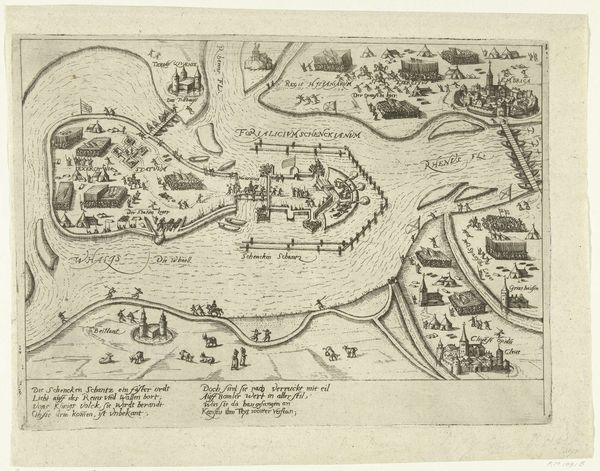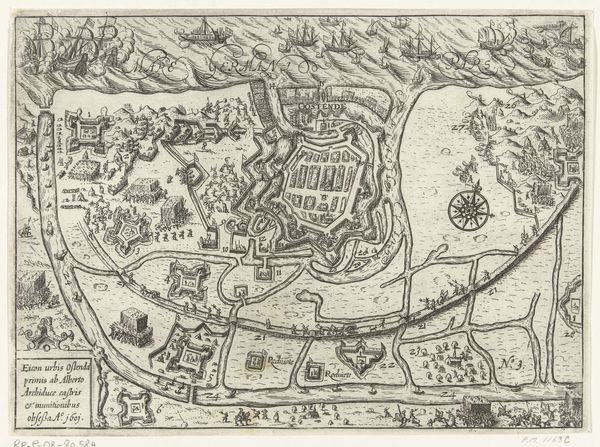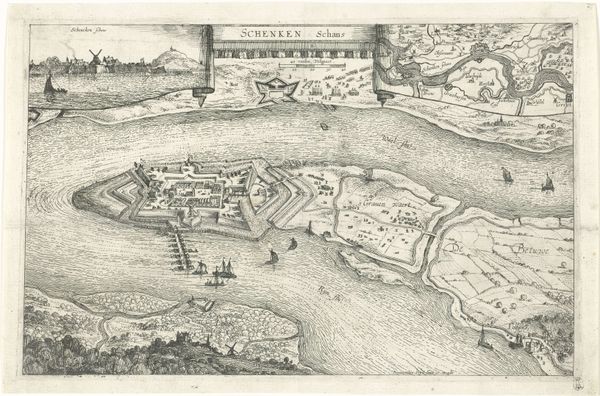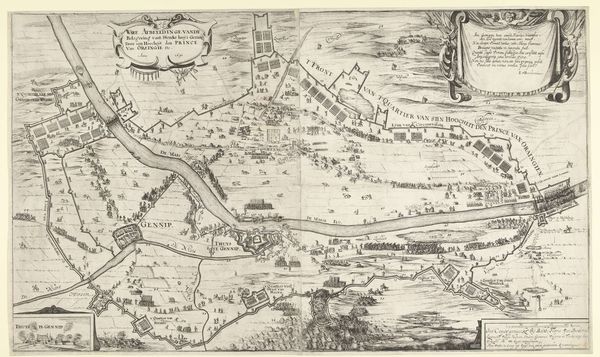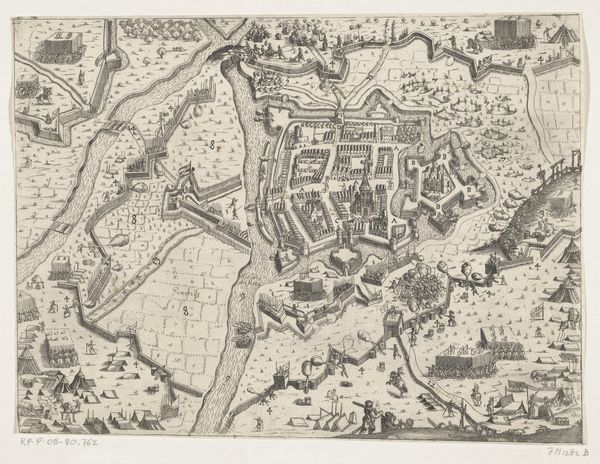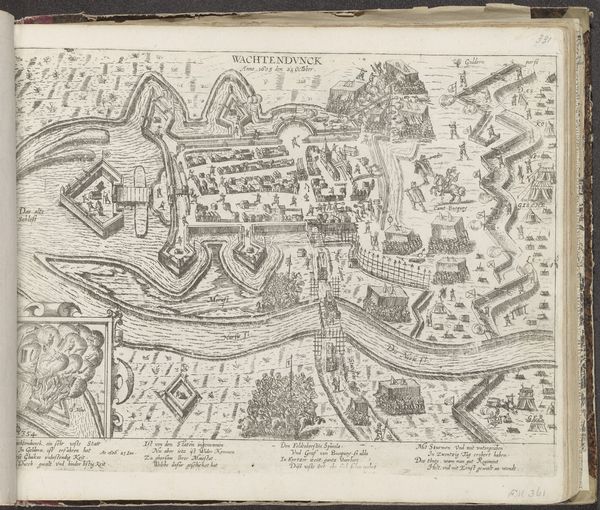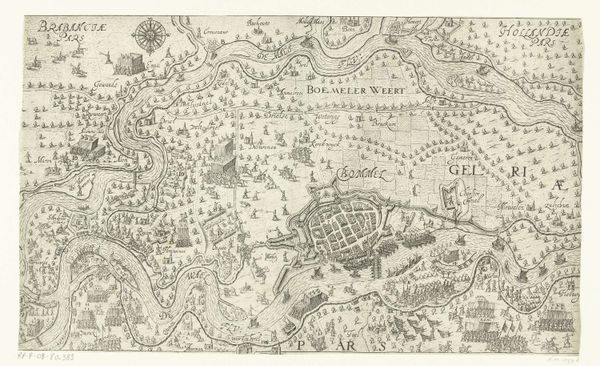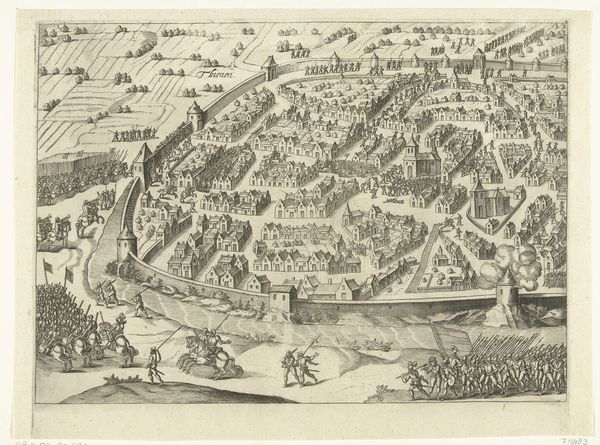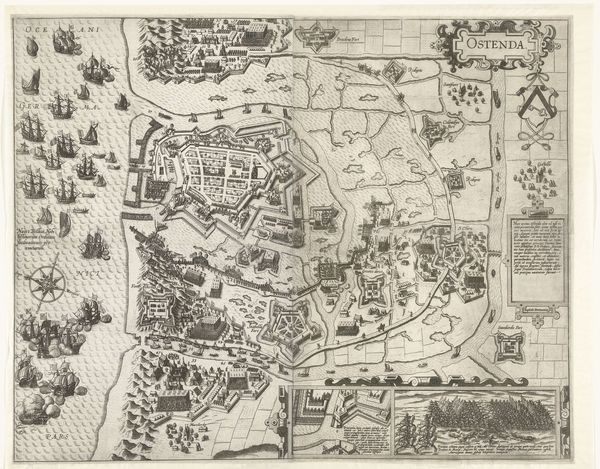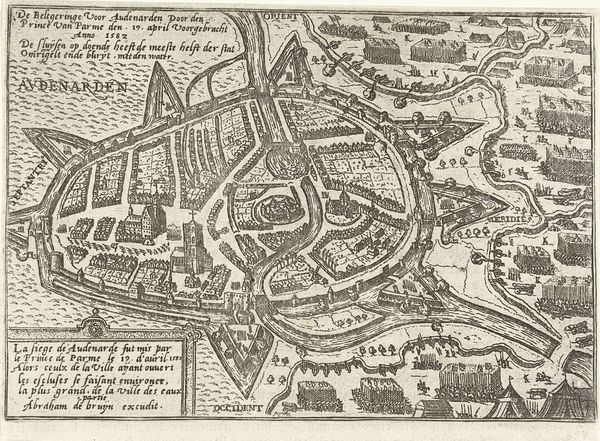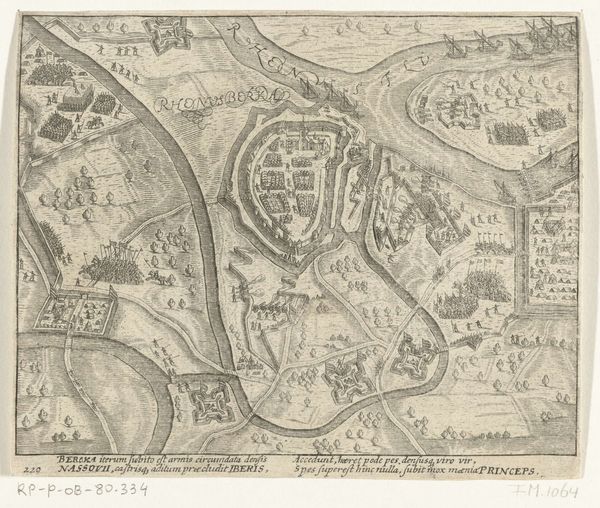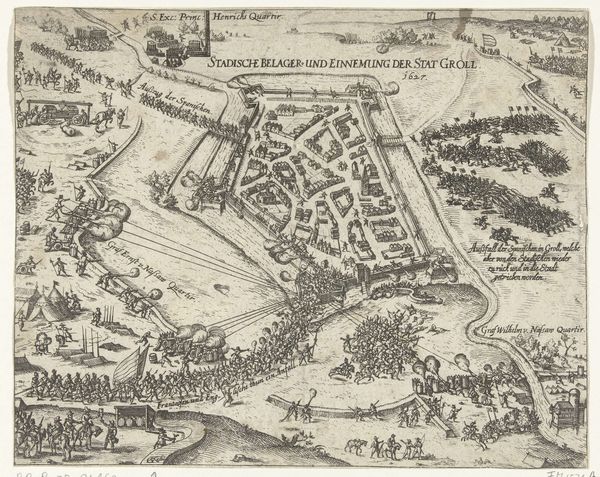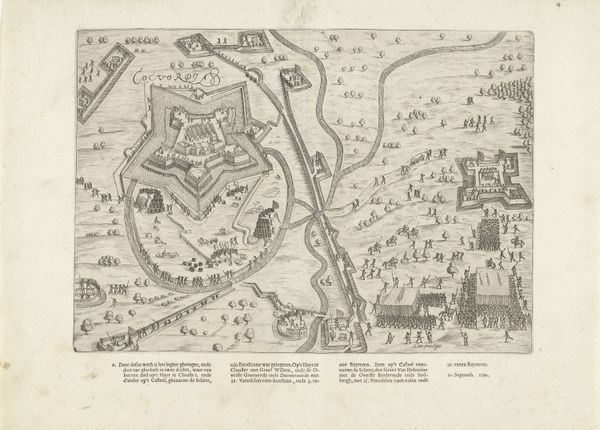
drawing, print, etching, ink, pen
#
drawing
#
baroque
#
pen drawing
# print
#
etching
#
landscape
#
ink
#
geometric
#
line
#
pen
#
cityscape
Dimensions: height 268 mm, width 342 mm
Copyright: Rijks Museum: Open Domain
Editor: So, this is Matthäus Merian's "Plattegrond van Leutkirch," a pen drawing, print and etching with ink from sometime between 1643 and 1690. I am immediately struck by the detail and the way it combines landscape and geometry. What aspects stand out to you? Curator: What I see is a cartographic representation deeply embedded in its socio-political context. These cityscapes were not neutral documents. How does the artist portray Leutkirch, and what does that tell us about the power dynamics at play? Consider the geometric precision used to depict the city versus the more organic rendering of the surrounding landscape. What could that contrast signify? Editor: That’s interesting. So, you’re saying it’s more than just a map? The sharp, defined city lines almost feel like a statement of control versus the natural world. Curator: Exactly. Maps were tools of power. Think about who commissioned this map and why. Who did it serve? Consider the act of surveying and mapping itself - who had the power to define and represent space, and whose perspectives were marginalized in that process? This isn't just about geographic accuracy; it's about shaping perceptions and reinforcing dominance. What narrative does it tell about the relationship between the city and its environment? Editor: So, by focusing on those questions of power and perspective, we can unlock so many new ways to look at the work? It completely reframes my view. Curator: Precisely! By examining art through an intersectional lens, we begin to uncover deeper meanings and connections that resonate far beyond the aesthetic surface. Editor: This has made me consider art's historical implications in a completely different light. Curator: And I'm glad that we were able to highlight new questions of perspective that will hopefully challenge conventional discourse on the relationship between art, history, and society.
Comments
No comments
Be the first to comment and join the conversation on the ultimate creative platform.
